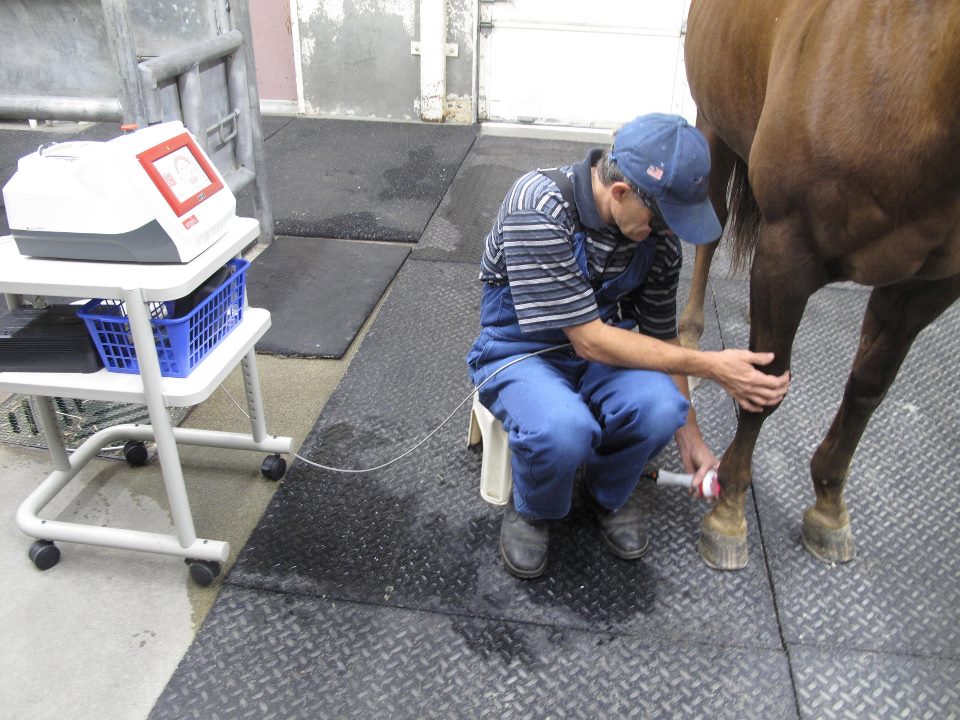Checking Out the Holistic Method of Equine Therapy for Individual Growth
Checking Out the Holistic Method of Equine Therapy for Individual Growth
Blog Article
How Laser Therapy in Equine Treatment Is Reinventing Veterinary Take Care Of Steeds
Laser treatment has emerged as a transformative approach in equine vet care, providing a non-invasive option that expedites healing and boosts total health. The transportability and convenience of laser treatment tools additionally emphasize their expanding indispensability amongst veterinarians.

Recognizing Laser Treatment
Comprehending laser treatment is necessary for appreciating its function in equine therapy. Laser therapy, also referred to as photobiomodulation, involves the application of specific wavelengths of light to cells, which can result in different biological impacts. This restorative method uses the power of light energy to pass through the skin and underlying cells, boosting mobile processes and boosting tissue repair work.
The innovation behind laser treatment is grounded in the principle of photochemistry, where photons are taken in by chromophores within cells, leading to boosted ATP manufacturing and modulation of reactive oxygen species. This, in turn, advertises mobile proliferation, lowers inflammation, and speeds up healing. Veterinary experts utilize various types of lasers, including low-level lasers (LLLT) and high-power Class IV lasers, relying on the specific healing objectives and the nature of the equine problem being dealt with.
Various laser wavelengths and power settings are very carefully chosen to target numerous tissue depths and accomplish desired scientific results. Security methods are critical, as improper use can result in thermal damages or suboptimal healing results. Hence, a thorough understanding of laser therapy's devices and applications is important for its effective implementation in equine vet method.
Advantages for Horse Health
The myriad benefits of laser treatment for equine health incorporate boosted healing, discomfort reduction, and improved wheelchair. This sophisticated therapy modality leverages certain wavelengths of light to penetrate tissues, promoting cellular function and advertising fast tissue repair work. The non-invasive nature of laser therapy ensures marginal anxiety and discomfort for the steed, facilitating a smoother recuperation process.

By reducing swelling and pain, and enhancing tissue repair work, laser treatment helps in recovering joint function and muscular tissue versatility. Therefore, laser therapy stands as a transformative tool in modern horse vet care.
Usual Conditions Treated
Laser therapy has actually become a functional treatment choice for a variety of typical equine conditions. Among these, musculoskeletal injuries are specifically open to laser treatment. Soft tissue injuries, such as tendonitis and tendon pressures, take advantage of the anti-inflammatory and analgesic results of laser treatments, which increase healing and lower discomfort. In addition, laser therapy works for problems like osteoarthritis, where it aids mitigate joint swelling and advertise cells repair.
Wound management is one more area where laser treatment has shown significant assurance. Chronic wounds or slow-healing ulcers can be specifically tough in horses, yet laser treatment enhances mobile regeneration and boosts blood flow, therefore accelerating the recovery procedure. Laser treatments have been effectively utilized in handling unguis problems such as laminitis and abscesses, relieving pain and promoting faster recuperation.
Equine professional athletes commonly experience performance-related concerns like muscle mass soreness and stress cracks. Laser treatment help in decreasing muscular tissue tiredness and quickens the healing of micro-injuries, thus guaranteeing that horses go back to peak efficiency a lot more swiftly. By addressing these varied problems, laser therapy is transforming the landscape of vet treatment, supplying a non-invasive, effective option to typical therapies.
Technology Behind Laser Treatment

Laser tools used in veterinary medication typically use low-level laser therapy (LLLT) or cold laser therapy. Unlike high-powered medical lasers, these devices run at reduced energy degrees, maximizing restorative advantages while lessening thermal damage. The power from the laser light stimulates adenosine triphosphate (ATP) production, enhances cellular metabolic process, and speeds up tissue repair work processes.
Modern laser treatment equipment for he said equine therapy is designed with adjustable setups to accommodate the certain needs of different tissues and problems. Equine Therapy. Criteria such as wavelength, power thickness, and therapy period can be carefully tuned, providing customized restorative solutions. Additionally, advancements in laser modern technology have brought about the development of portable, portable gadgets, making it less complicated for vets to offer therapy in a variety of setups, from clinics to stables. This technological technology is a foundation in the reinventing of equine vet treatment.
Success Stories and Study
Showcasing the tangible benefits of laser therapy, various success tales and study illuminate its transformative influence on equine wellness. One such case entails a purebred racehorse suffering from chronic tendonitis. Standard therapies produced minimal renovation, however after incorporating laser treatment right into the routine, the horse showed significant decreases in swelling and discomfort within weeks, ultimately returning to competitive racing.
An additional engaging instance features a dressage equine diagnosed with serious back discomfort, restricting its efficiency. A vet team used low-level laser therapy (LLLT) to target the irritated areas, causing marked enhancement in flexibility and a significant decline in pain. Over a number of sessions, the steed regained its peak kind, showcasing the effectiveness of laser treatment in resolving musculoskeletal concerns.
Additionally, a research performed at a leading equine facility examined 50 equines with various soft tissue injuries treated with laser therapy. The outcomes stood out: 85% of the equines showed accelerated Go Here healing times and boosted mobility. These situations emphasize the versatility and efficiency of laser treatment in equine medicine, using a non-invasive, scientifically-backed method to improving recovery and performance in horses.
Conclusion
Laser treatment is revolutionizing equine vet treatment by offering a non-invasive treatment that accelerates healing, lowers swelling, and eases discomfort. With its efficiency in Find Out More treating a variety of conditions, from musculoskeletal injuries to persistent conditions like osteoarthritis, this technology substantially boosts equine wellness and movement. The transportability and flexibility of laser treatment even more underscore its transformative influence on vet techniques, strengthening its role as a necessary tool in modern equine health care.
Report this page